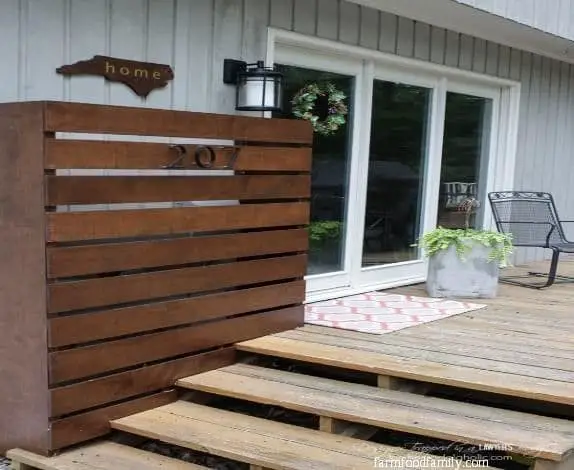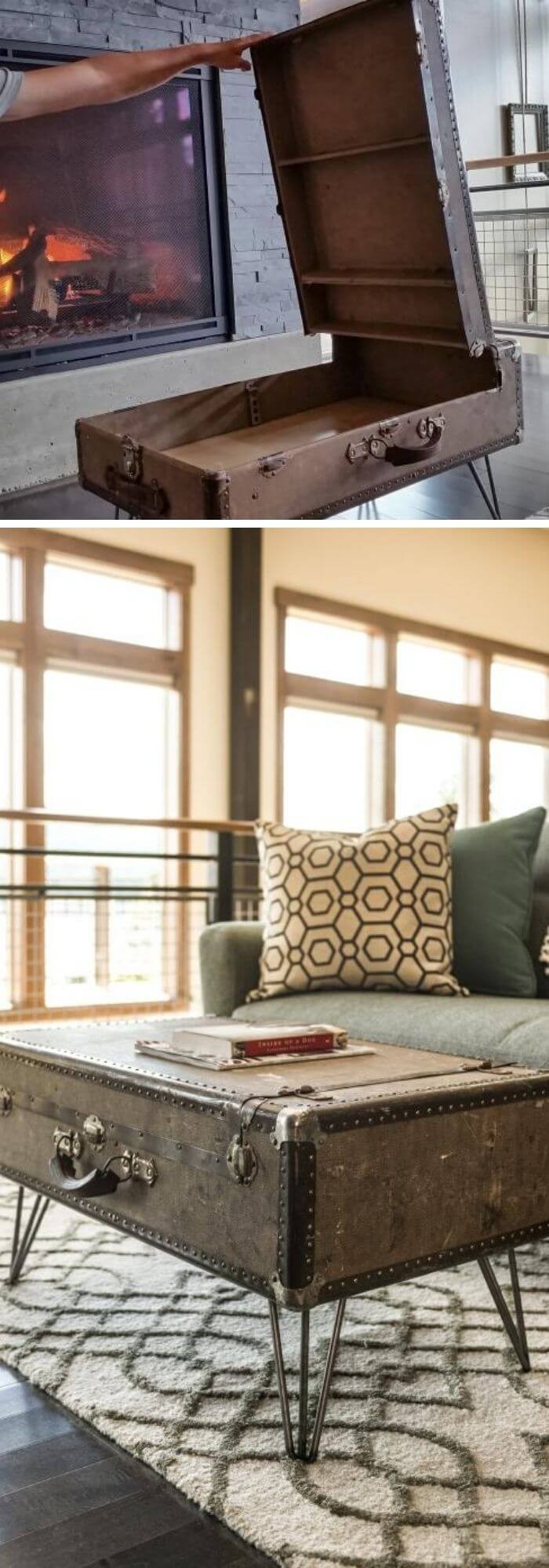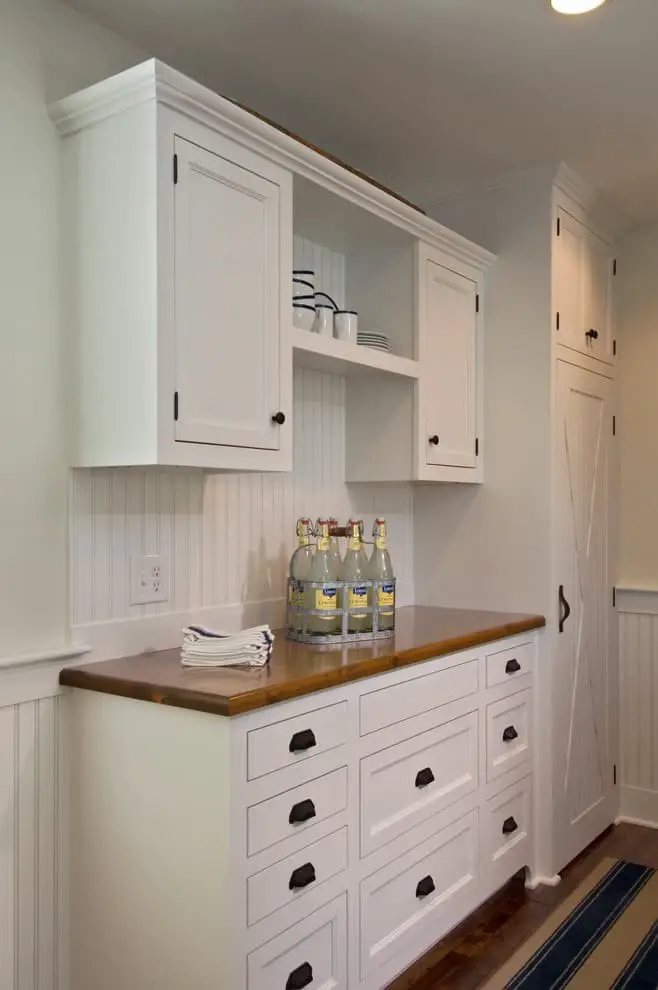32 Alternatives To Central Air Conditioning That Will Keep You Cool This Summer
As the sun beats down this summer, it’s natural to crave a cooler climate without breaking the bank. Fortunately, there are numerous alternatives to central air conditioning that can help you stay comfortable all season long. From fans to portable AC units, we’ve compiled 32 cooling solutions to explore. One option is using an air cooling fan, which not only provides a gentle breeze but also helps circulate air and reduce humidity.
Another alternative is installing an attic fan, which can greatly reduce heat gain in your home. If you’re looking for a more eco-friendly solution, consider using ice packs or gel packs to cool down. You can also harness the power of nature with awnings, shade trees, and shrubs that provide natural shading. For those who want a more high-tech solution, there are options like evaporative air coolers, ductless mini-split ACs, and even geothermal heating and cooling systems.
Of course, some solutions require a bit more effort upfront but can pay off in the long run. For instance, adding insulation to your home or using low-E windows can greatly reduce heat gain and save you money on energy bills. And then there are the more creative solutions like using window film, shutters, and natural air circulation techniques to keep your home cool and comfortable.
Air cooling fan
Beat the heat by shopping now on Amazon and upgrading your indoor climate control with a versatile fan. For smaller spaces, look for models that oscillate, expertly circulating the air throughout the room. Alternatively, consider fans equipped with built-in ionizers to purify the air while keeping you cool.
Pros of using an air cooling fan:
This clever device leverages the existing air in your room, utilizing natural convection to effectively cool the space. Moreover, its versatility allows it to seamlessly integrate with window units or central air systems, further enhancing airflow and creating a refreshing atmosphere.
Cons of using air cooling fan:
While evaporative cooling systems do offer some relief from the heat, they have a significant limitation: they don’t actually reduce the temperature of the air in the room. This means that if the ambient temperature is above 85°F (30°C), these devices won’t be able to cool the space further. As such, fans should only be used as part of a larger cooling strategy when the temperature is below this threshold.
Cost:
Attic fan
While shopping online is always convenient, let’s talk about a more practical aspect of living comfortably at home. Installing an attic fan can be a game-changer for many homeowners. Its primary function is to remove hot air from your attic space, creating a cooler and more pleasant environment within your home. Now, you might wonder when the best time to use this device is.
In our experience, the morning hours are ideal after opening up doors and windows in your home to let the fresh air circulate.
Pros of using attic fan:
By installing a whole-house fan, you can achieve a more comfortable living space by introducing two key benefits. Firstly, it enables the removal of excess moisture from the air, effectively reducing humidity levels within your home. This not only helps to eliminate musty odors and mildew growth but also creates a healthier indoor environment.
Secondly, as hot air is drawn out of your home through the fan’s unique design, you can expect cooler air to circulate throughout your living space, providing a refreshing respite from the heat.
Cons of using attic fan:
When it comes to maintaining a comfortable indoor temperature, the impact of an attic fan is often undermined by another factor: unsealed openings. Specifically, when doors and windows remain open, warm air enters the house, essentially canceling out the benefits of an attic fan working to pull hot air out. As a result, energy efficiency takes a hit.
Clothesline/clothes drying rack
Take advantage of Amazon’s vast array of eco-friendly products while adopting a more sustainable approach to drying your clothes. Consider skipping traditional laundry practices that rely on electricity or gas, and opt for air-drying your garments instead. Simply hang them outside to dry, allowing nature to do its thing.
Pros of air drying:
Eliminating the need for a clothes dryer can have a significant impact on both your energy consumption and utility bills. This appliance is often one of the largest energy users in the home, making it an ideal target for reducing your overall energy expenditure.
Cons of air drying:
When relying solely on air drying, garments often experience increased wear and tear due to prolonged exposure to the elements. Furthermore, this natural process can be a time-consuming endeavor, requiring patience and dedication. In contrast to machine-driven drying methods, air drying tends to prolong the overall drying time, leading to a more labor-intensive approach.
Window fan
When it comes to keeping your home comfortable, window fans can be a game-changer. Not only do they allow you to circulate the air within your space, but they also offer the ability to draw in cool air from the outdoors or push hot air out of your home, effectively regulating the temperature and humidity levels.
Pros of using window fan:
Window fans offer an affordable and versatile cooling solution. Typically priced at around $30 or less, these devices provide a budget-friendly way to beat the heat. One of their biggest advantages is portability – they can be easily installed in any room and even relocated to different areas as needed, making them ideal for large homes or apartments.
Cons of using window fan:
While air conditioning (AC) units are undoubtedly the most potent and efficient means of cooling a home, fans can still offer some relief from the heat. However, their ability to cool is significantly limited compared to that of an AC unit.
Ice packs/gel packs
When the temperature rises and you’re in need of a cooling solution, consider reaching for ice packs or gel packs. Not only are they effective at bringing down body heat when you’re feeling overheated or feverish, but they can also be used to chill your bed for a more comfortable night’s sleep. But that’s not all – these versatile tools can also be cleverly repurposed to create a refreshing breeze by placing them in front of fans.
Pros of using ice packs/gel packs:
One of the most significant advantages of these affordable options is the reduced upfront cost. You can get started by purchasing a single pack, which eliminates the need for a significant investment. Plus, refilling with water is easy and inexpensive, making it an extremely budget-friendly choice.
Cons of using ice packs/gel packs:
To ensure optimal performance, these devices require regular watering – a crucial aspect to keep in mind. While they may not retain their cooling properties for as extended period as alternative approaches, they still offer an effective way to regulate temperature.
Misting fan
For those who don’t have access to air conditioning units, a misting fan can be a lifesaver. This innovative device not only cools the surrounding air but also provides relief from the heat. Its effectiveness makes it an excellent alternative to traditional cooling methods.
Pros of using misting fan:
Many individuals seeking to beat the heat without breaking the bank will find that outdoor misting fans offer a convenient and budget-friendly solution. With a majority of models priced below $100, these innovative devices provide an accessible means to keep cool, making them a more affordable alternative compared to many other cooling options.
Cons of using misting fan:
It’s important to note that evaporative cooling systems are typically designed for small, enclosed spaces and aren’t capable of cooling an entire house or building. They’re most effective at cooling the air within their immediate vicinity, rather than significantly impacting the overall temperature of a larger area.
Awnings
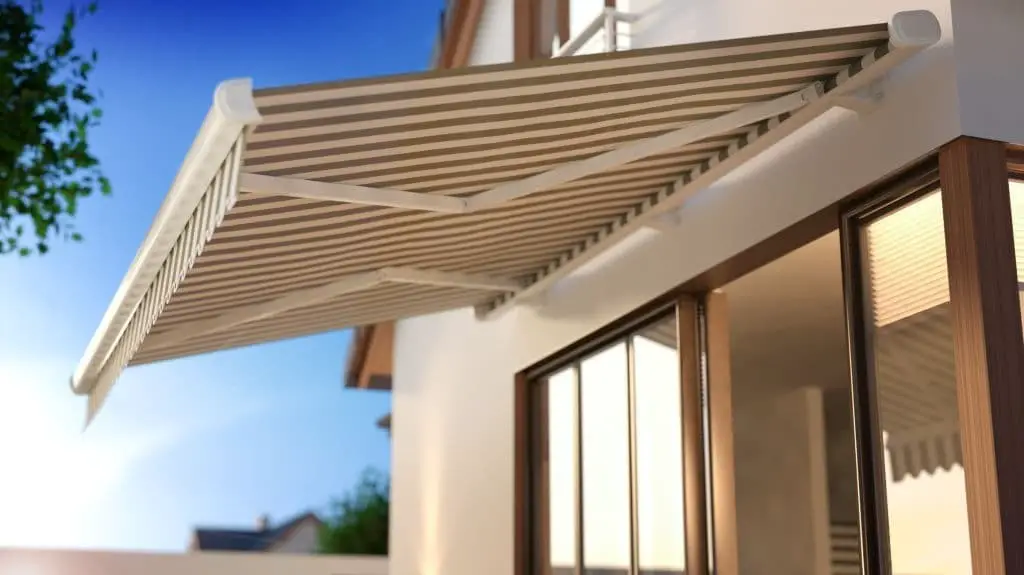
By installing an awning above your windows, you can effectively block out unwanted sunlight and heat from seeping into your home. This simple yet effective solution provides a welcome respite from the scorching sun’s rays, keeping your interior spaces cooler and more comfortable to inhabit.
Pros of using awnings:
These versatile window treatments can be installed over any window, providing a practical solution for managing indoor climate. By blocking out sunlight and heat, they help keep your home cooler and more comfortable during the summer months.
Cons of using awnings:
While these methods can be highly effective, it’s essential to note that they may not perform as well in extremely hot environments. Moreover, maintaining a high level of cleanliness is crucial for them to function optimally; if neglected, their efficacy can significantly decline.
Biomass Cooling
A natural alternative to conventional air conditioning, biomass cooling leverages evaporative cooling techniques to reduce indoor temperatures. This approach involves exposing warm air to water, which helps to cool it down. What sets biomass coolers apart from traditional AC units is the source of energy – while standard systems rely on electricity or fossil fuels, biomass coolers harness the power of the sun to operate.
Pros of biomass cooling:
Harnessing the power of nature, innovative solutions have emerged that convert the natural world’s principles into a sustainable and eco-friendly form of energy. This environmentally responsible approach taps into the very fabric of our planet to provide a renewable source of power.
Cons of biomass cooling:
While geothermal air conditioning systems may offer several advantages, they do come with some limitations. For instance, the upfront cost of installation can be higher compared to traditional AC units. Additionally, the system relies on the sun’s energy to generate heat, making it essential to have a location that receives sufficient sunlight to function optimally.
Dehumidifier
For those looking to conquer humid climates, having the right tool for the job can be a game-changer. A dehumidifier is precisely that – a device designed to extract excess moisture from the air, thereby making the surrounding environment more breathable and cooler. By doing so, it can significantly alleviate issues related to humidity in areas where high levels of moisture are prevalent.
Pros of using a dehumidifier:
By installing a dehumidifier, you can reap several benefits that can greatly impact your daily life. For instance, these devices are highly effective at removing excess moisture from the air, resulting in a more comfortable breathing environment. Additionally, dehumidifiers can also help reduce the strain on your energy bill by minimizing the need for air conditioning. This is particularly useful during hot summer months when the temperature and humidity levels tend to soar.
Cons of using a dehumidifier:
This solution may have limited effectiveness in extremely warm environments with low to moderate humidity, as the dry air can hinder its performance. It’s essential to consider these factors when applying this remedy.
Ductless mini-split air conditioner
When it comes to keeping your home cool, consider opting for a ductless mini-split air conditioner instead of traditional central air conditioning systems. Unlike these more common units, mini-splits don’t require ductwork to function, using refrigerant lines to distribute cooled air throughout your space. This design can actually be more energy efficient than traditional systems, making it an attractive option for those looking to save on their cooling costs.
While the upfront cost of installation may be higher for a mini-split system, its advantages make it a worthwhile investment for those without the ability to install traditional ductwork. For homeowners in this situation, a ductless mini-split air conditioner can provide a reliable and efficient way to keep your home comfortable.
Pros of using a ductless mini-split AC:
When it comes to choosing an alternative to traditional central air conditioning systems, you’ll find that some options stand out for their impressive energy efficiency. One such solution is [insert technology/system], which boasts a significant reduction in energy consumption compared to conventional methods. What’s more, this innovative approach eliminates the need for ductwork installation, making it a practical choice for homeowners and businesses alike.
Cons of using a ductless mini-split AC:
While geothermal heat pumps can offer numerous benefits, there are a few drawbacks to consider. One potential drawback is that they tend to be more costly to install compared to traditional central air conditioning systems. Additionally, their ability to reduce humidity levels may not be as effective as other types of AC units. This is worth considering when weighing the pros and cons of geothermal heat pumps against those of alternative cooling solutions.
Evaporative air coolers (or swamp coolers)
When it comes to beating the heat, consider opting for an evaporative air cooler from Amazon. Unlike traditional air conditioners, these eco-friendly alternatives harness the natural power of evaporation to cool your home, making them a cost-effective and hassle-free solution. While they do require a reliable water source to operate efficiently, their compact design and ease of installation make them an attractive option for many homeowners.
However, it’s essential to note that evaporative air coolers may not be the most effective choice for hot, arid climates, where other types of AC units might prove more suitable.
Pros of using an evaporative air cooler:
The installation process for these options is straightforward, requiring minimal effort and resources. Additionally, their upkeep is remarkably low-key, making them an ideal choice for those seeking hassle-free solutions.
Cons of using an evaporative air cooler:
While evaporative air conditioning (AC) units are an efficient and eco-friendly way to cool your home or office, they do have some limitations. For instance, they might not be the most effective option for hot, dry climates, where other types of AC units may perform better. Additionally, evaporative ACs require a constant water source to operate properly, which can add an extra layer of complexity to their installation and maintenance.
Exhaust fans
For a convenient and energy-efficient cooling solution, consider investing in an exhaust fan from Amazon. This type of air mover leverages the natural power of convection to keep your home at a comfortable temperature. While they are relatively affordable and straightforward to install, these units do require either electricity or gas to operate. One notable drawback is that they may not be as effective in extremely hot and humid climates compared to other types of air conditioning units.
Pros of using exhaust fans:
Exhaust fans offer an added benefit that’s often overlooked: they can significantly improve air circulation within your home. This natural ventilation boost is especially valuable, considering the importance of indoor air quality. Moreover, these devices are surprisingly affordable and straightforward to install – all you need is a reliable power or gas supply to get them up and running.
Cons of using exhaust fans:
When relying on exhaust fans for cooling, it’s essential to understand that their performance is often compromised when temperatures soar. This is because exhaust fans rely heavily on convection currents to dissipate heat, which can become less effective in hot environments. Furthermore, the air circulated by these fans may not be as clean or fresh as you would expect from alternative air conditioning solutions.
Ceiling Fans
Experience the simplicity and energy-efficiency of ceiling fans with Amazon shopping! Not only do these innovative devices provide effective cooling solutions without relying on electricity or gas, but they’re also surprisingly affordable and relatively easy to install. A great way to make your home more comfortable while keeping costs low.
Pros of using ceiling fans:
Ceiling fans offer a convenient and cost-effective solution for keeping your home cool, requiring only electricity or gas to operate. While the circulated air may not possess the same level of purity as other air conditioning units, they are still effective in reducing temperatures and promoting a comfortable living space.
Cons of using ceiling fans:
Ceiling fans have a limited cooling range, only effectively cooling people and objects directly in their path. If you’re not positioned to catch the fan’s airflow, you won’t experience any noticeable relief from the heat. Moreover, fans can sometimes create an illusion of increased warmth when used improperly or during extreme outdoor temperatures. This is because they can circulate hot air more efficiently than cooler air, making the space feel even hotter.
Geothermal heating and cooling
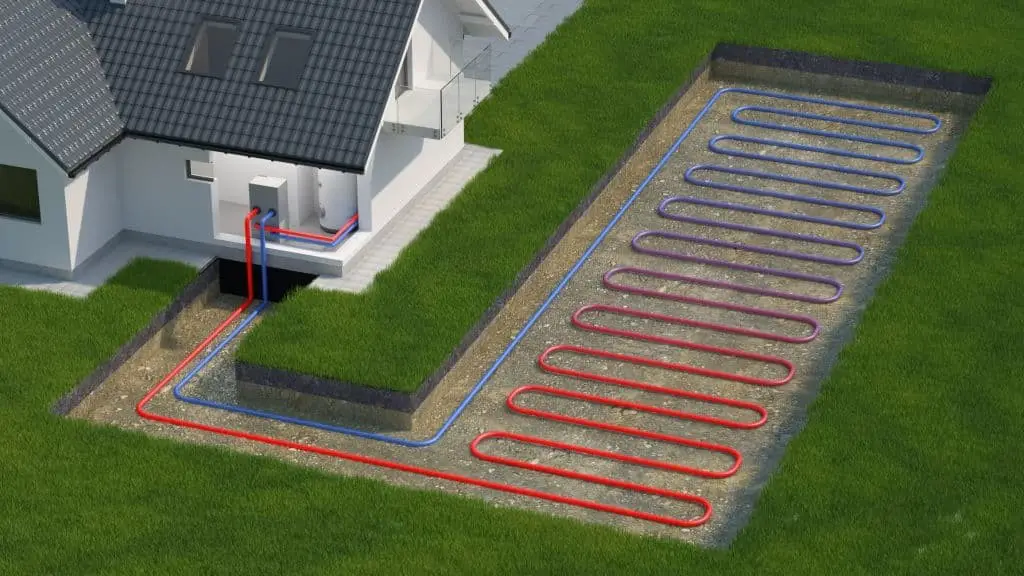
Geothermal heating and cooling boasts an impressive track record of efficiency and eco-friendliness, making it an attractive option for homeowners seeking to reduce their environmental footprint. At its core, this innovative technology leverages the Earth’s natural thermal energy to regulate indoor temperatures year-round, providing both heating and cooling functions in a seamless manner.
Solar air conditioning
Solar-powered air conditioning systems utilize the energy harnessed from solar panels to generate electricity, which in turn powers a conventional air conditioner. This innovative technology is particularly well-suited for homes situated in areas with abundant sunlight throughout the year.
However, for residences that don’t receive sufficient direct sunlight, it’s essential to consider solar air conditioning units equipped with an auxiliary heating system, allowing for reliable cooling performance even on cloudy days.
Green Roofs
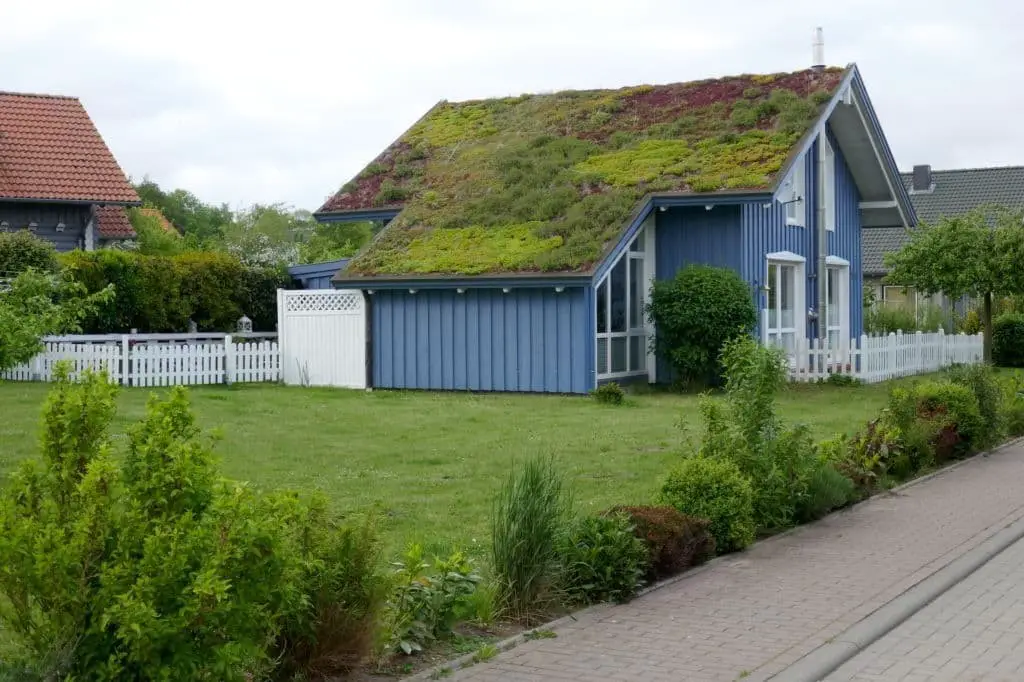
Vegetation-covered rooftops, often featuring lush grasses, diverse plant species, or even trees, have a profound impact on the functionality and sustainability of a building. By integrating green roofs into your home’s design, you can experience a cooler summer and warmer winter, as well as enjoy notable reductions in energy consumption and stormwater runoff.
Pros of using green roofs:
The eco-friendly benefits of green roofs are undeniable. By reducing carbon emissions, providing natural cooling systems, and mitigating stormwater runoff, these innovative solutions offer a triple threat against environmental degradation. In fact, incorporating green roofs into urban planning can have a significant impact on the health of our planet.
Cons of using green roofs:
While installing a green roof can be a time-consuming process, it’s essential to consider the ongoing maintenance required to keep it thriving. Additionally, certain environmental conditions can make a green roof less suitable for your home. For instance, if you live in an area prone to significant snowfall or heavy rainfall, a green roof might not be the best solution.
Areas with extremely hot and dry climates may be more suitable for a green roof, but even then, frequent high-speed winds, such as those experienced during hurricanes or tornadoes, can pose a challenge. As you weigh the pros and cons of installing a green roof, it’s crucial to consider your local climate and environmental conditions.
Hydronic Or Radiant Heating & Cooling
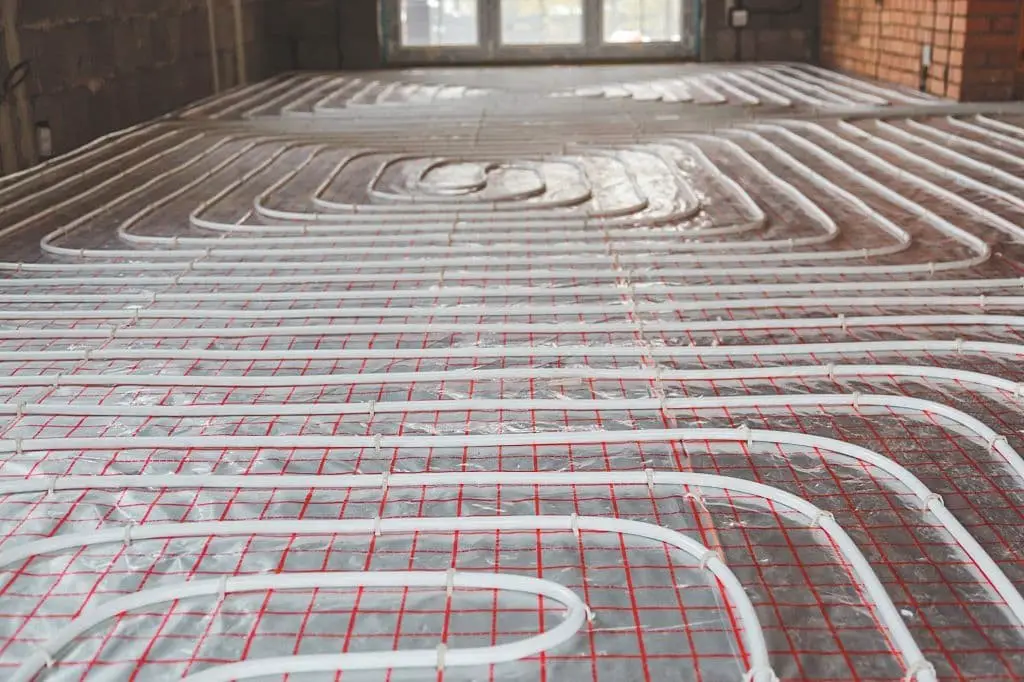
Hydronic or radiant heating and cooling systems rely on water to regulate the temperature within a home. This innovative approach involves circulating hot or chilled water through pipes installed in walls, floors, and ceilings. As the water flows, it absorbs heat from the surrounding air and recirculates it, providing consistent warmth or coolness throughout the space.
Pros of using hydronic or radiant heating and cooling:
Characterized by their remarkable efficiency, eco-friendliness, and discreet operation, hydronic systems offer a compelling package of benefits. One of the most significant advantages is their ability to provide hot water for various household applications, including bathing, washing, and other essential uses.
Cons of using hydronic or radiant heating and cooling:
While hydronic systems offer many benefits, their upkeep is a crucial consideration. One of the most important tasks in maintaining these systems is draining them periodically – typically every few years – to prevent sediment and mineral deposits from accumulating and reducing system efficiency. This regular maintenance ensures the continuous flow of warm water throughout your home or building, providing comfort and energy savings.
Insulation
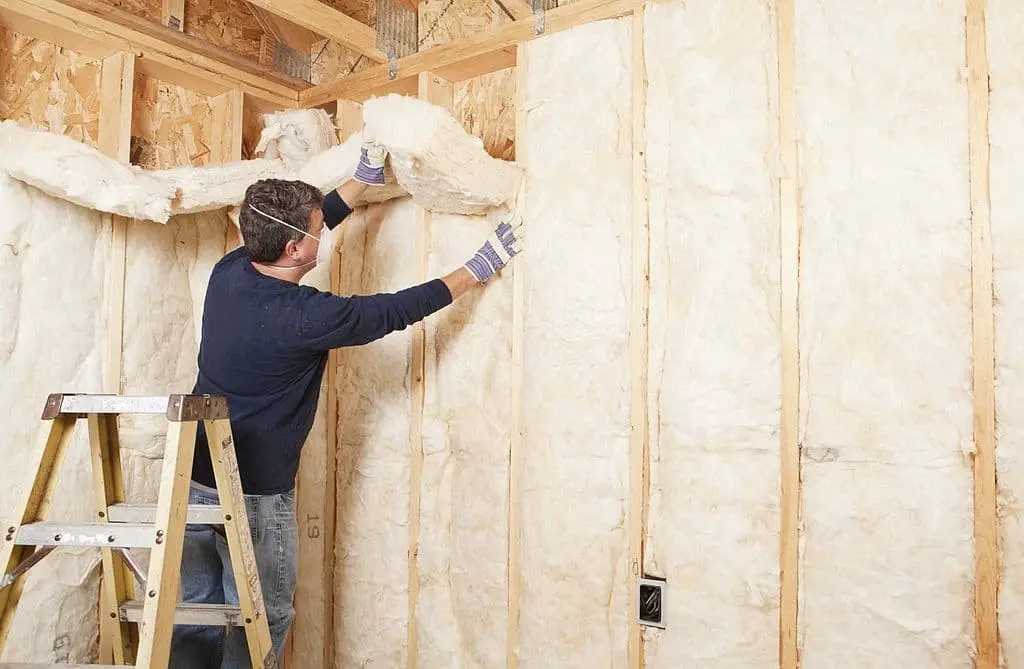
When inheriting an older home, you may discover that it’s lacking proper insulation, which can lead to increased heating and cooling expenses. Installing insulation is a simple yet effective way to rectify this issue. This crucial component plays a multifaceted role in maintaining a comfortable indoor climate.
Not only does it keep the scorching summer sun at bay while retaining warmth during the chilly winter months, but it also serves as a reliable noise barrier, shielding your home from outside distractions.
Pros of using insulation:
For homeowners looking to make a smart investment, insulation proves to be a cost-effective and straightforward solution, particularly for those with older homes. By efficiently blocking heat transfer between rooms or areas, it not only reduces energy expenditure on heating and cooling but also enhances overall energy efficiency, making it an attractive option for anyone seeking to minimize their utility bills.
Cons of using insulation
While insulating a home may come with an upfront cost, the extent of the work and ongoing upkeep required to maintain its effectiveness can impact the overall expenditure. Nonetheless, the benefits of proper insulation, such as reduced energy bills and improved indoor climate control, make the investment worthwhile for many homeowners.
Low-E Windows
Windows with low emissivity (Low-E) coatings have gained popularity in recent years due to their ability to regulate temperature effectively. These specially designed windows feature a thin layer of metal or other materials on the glass pane that helps reflect heat away from your home during summer months, keeping it cooler and more energy-efficient. Conversely, they also work to retain warmth inside your home during winter, reducing heat loss and minimizing energy consumption.
As such, Low-E windows are an ideal choice for homeowners residing in regions with intense sunlight and high temperatures.
Pros of using low-E windows:
When it comes to regulating your home’s temperature, low-E windows prove to be a game-changer. Not only do they effectively keep your space cool during the scorching summer months and warm during the chilly winter days, but they also contribute significantly to reducing energy consumption. What’s more, installing low-E windows can be a cost-effective solution compared to investing in a brand-new air conditioning system.
Cons of using low-E windows:
While Low-E windows can offer numerous benefits, they might not be the most suitable option for homes situated in areas with predominantly cold and overcast weather conditions. Additionally, their higher upfront cost compared to standard windows may be a drawback for some homeowners.
Shade Trees & Shrubs
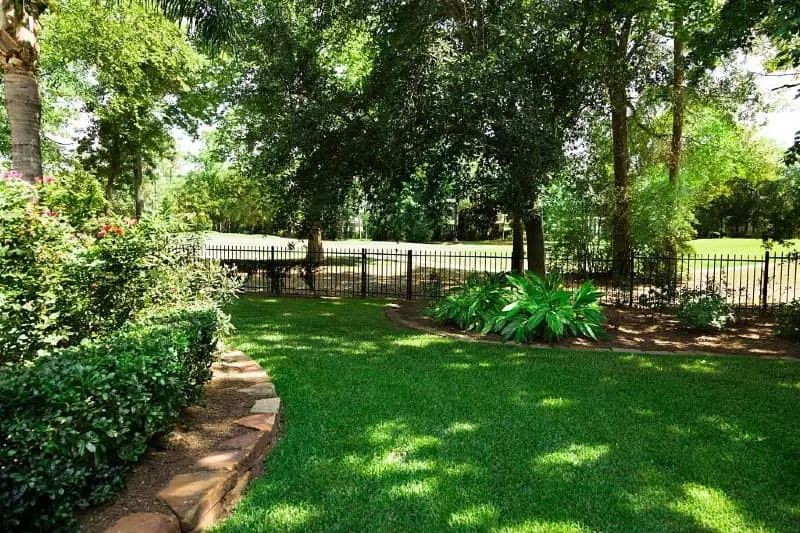
When it comes to maintaining a comfortable indoor climate, one often overlooked solution is to strategically plant trees and shrubs near your residence. Not only do these plants provide natural shade, which can significantly reduce the amount of sunlight that enters through windows or doors during the scorching summer months, but they also serve as an effective barrier against cold winds in the winter.
By blocking harsh gusts from blowing into your home, trees and shrubs help trap warm air inside, keeping you cozy on chilly days.
Pros of using shade trees and shrubs:
Not only do trees and shrubs offer an affordable and effortless way to landscape, but they also provide numerous benefits for homeowners. By strategically planting these plants around your home’s exterior, you can enjoy a natural reduction in energy consumption. In the summer, their foliage acts as a natural barrier, preventing excessive sunlight from entering your home and reducing the need for air conditioning.
Conversely, during the winter months, these same plants help trap heat, allowing you to retain warmth without relying too heavily on heating systems.
Cons of using shade trees and shrubs
While trees and shrubs bring numerous benefits, they can also pose some drawbacks. One common issue is their tendency to become overgrown, requiring frequent pruning to maintain a neat appearance. Moreover, if these plants are situated too closely to windows, doors, or other architectural features, they may even present a safety risk, particularly in areas prone to strong winds or heavy snowfall.
Window Film
For those looking to shop now on Amazon, consider installing window film on the inside of your home’s windows. This thin, plastic film works wonders by reflecting heat away from your home during the scorching summer months and trapping warmth inside during the chilly winter days. Its benefits are especially pronounced for homes situated in regions with intense sunlight. By applying this simple yet effective solution, you can enjoy a more comfortable living space all year round.
Pros of using window film
By installing window film, homeowners can enjoy significant benefits without breaking the bank. Not only does it effectively regulate indoor temperatures, keeping homes cooler during the sweltering summer months and warmer during chilly winters, but it also reduces energy consumption by reflecting heat away from windows.
Cons of using window film
While window film can be a significant investment, especially if you’re looking at covering large areas or multiple windows, it’s crucial to consider the long-term benefits it provides. Moreover, its effectiveness relies heavily on proper maintenance, which adds an extra layer of responsibility to your initial outlay.
Shutters
For those seeking to regulate the natural light pouring into their home, shutters are a versatile option worth considering. By effectively blocking sunlight in summer and trapping warmth during winter, these window treatments can be particularly beneficial for homes situated near the equator.
As they provide enhanced protection from the sun compared to traditional window coverings, shutters make an excellent choice for homeowners looking to strike a balance between light control and energy efficiency.
Pros of using shutters
By incorporating shutters into your home’s design, you can enjoy a dual benefit – maintaining a comfortable temperature while minimizing your energy consumption. These cost-effective solutions effectively block out sunlight during both scorching summer days and chilly winter mornings, allowing you to regulate the internal climate without breaking the bank.
Cons of using shutters
The cost of shutters can be a significant factor, as the extent of necessary work will directly impact the final price. Moreover, shutter maintenance is an ongoing requirement to ensure their continued effectiveness.
Natural Air Circulation
To beat the heat without breaking a sweat, harnessing natural air circulation is an effective way to keep your home cool this summer. By cleverly opening windows and doors, you can create a gentle breeze that flows through your home, expertly circulating the air. Alternatively, strategically placing fans around your living space can also help to circulate the air and make your home feel cooler than it actually is.
Pros of using natural air circulation
Harnessing the power of natural airflow can be a game-changer for homeowners, offering a cost-effective and effortless way to regulate indoor temperatures. By leveraging this free resource, you’ll not only experience a reduction in energy consumption but also enjoy a more comfortable living space.
Cons of using natural air circulation
While natural air circulation is effective in many scenarios, it can be a less-than-ideal solution for managing indoor climate. During periods of extreme heat and humidity, the stagnant air can feel oppressive, making it difficult to maintain a comfortable temperature. Additionally, this method falls short when temperatures drop and cold air enters the space, requiring alternative solutions to ensure optimal indoor conditions.
Portable air conditioners
For efficient cooling solutions, consider investing in a portable air conditioner. This self-contained unit is specifically designed to cool down a single room, providing an effective way to beat the heat without breaking the bank. Perfectly suited for apartment dwellers and those with limited space, this compact device can be easily moved from one area to another, offering unparalleled flexibility.
Whether you’re looking to create a cooler oasis in your living room or provide a refreshing escape in your bedroom, a portable air conditioner is an excellent choice.
Pros of using portable air conditioners
One of the most attractive features of portable air conditioners is their affordability and ease of use. By providing targeted cooling for a single room, these units eliminate the need for costly installations or complex configurations. Simply place the unit in the room you want to cool, plug it in, and enjoy the refreshing benefits without breaking the bank.
Cons of using portable air conditioners
While portable air conditioners can be a significant investment, with prices varying greatly depending on their size and features, it’s essential to remember that they also require regular maintenance to ensure optimal performance. In fact, neglecting routine upkeep can lead to reduced efficiency, increased energy bills, and even premature wear and tear.
Radiant Heat Barriers
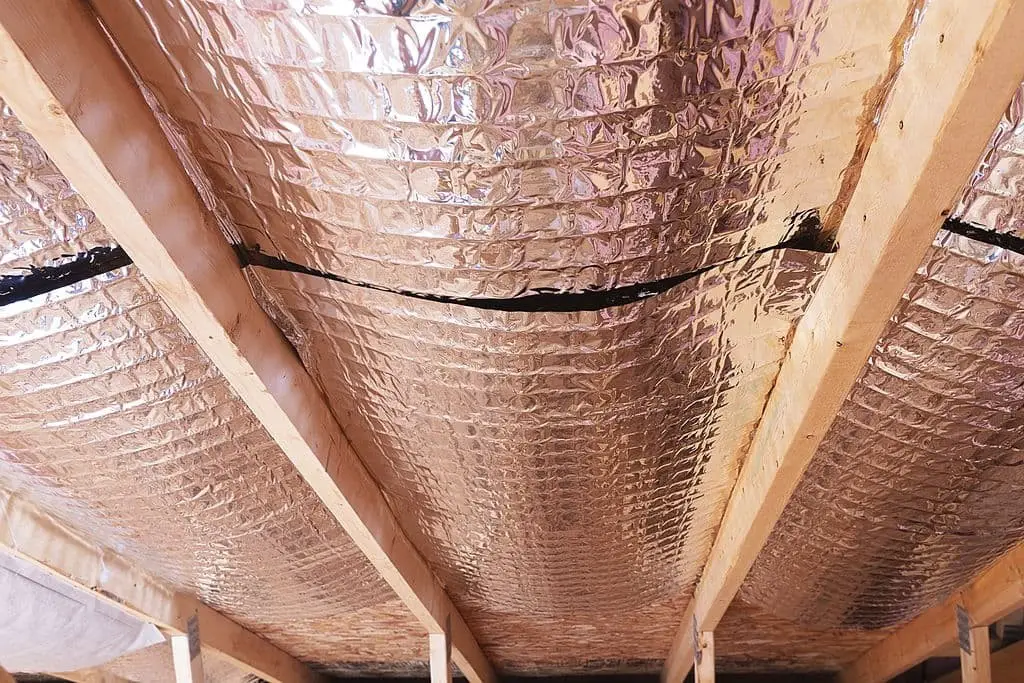
Radiant heat barriers are innovative solutions designed to intercept solar radiation before it can penetrate your attic. By efficiently reflecting the sun’s energy back into the atmosphere, these materials prevent excessive heat gain in your home and keep your attic cooler.
Pros of using radiant heat barriers
Opting for radiant heat barriers is an economical solution to maintain a comfortable indoor climate throughout the year, effectively regulating temperatures during both scorching summers and freezing winters. By blocking solar radiation, these barriers not only keep your home warm in winter but also prevent excessive heat gain in summer, thereby minimizing energy consumption.
Cons of using radiant heat barriers
While radiant heat barriers can be a valuable investment for energy efficiency, their upfront cost and ongoing maintenance requirements may pose challenges for some homeowners. The price of these barriers can vary significantly depending on the scope of the project, with larger installations naturally costing more. Furthermore, in order to maintain their effectiveness, radiant heat barriers require regular upkeep, which can add to their overall expense.
Room fans
For optimal indoor climate control, consider investing in a room fan from Amazon. These versatile devices are specifically designed to keep a single space in your home at a comfortable temperature. They can be floor-standing or wall-mounted, with various size options available to cater to different-sized rooms and personal preferences.
Pros of using room fans
For homeowners seeking an affordable and hassle-free solution for maintaining a comfortable temperature, room fans can be a fantastic option. These devices excel at cooling down individual rooms without necessitating any complex installation procedures.
Cons of using room fans
While room fans may seem like a straightforward purchase, their cost can quickly add up depending on factors such as size and type. Furthermore, these devices necessitate routine upkeep to ensure optimal performance, making them a more complex consideration than initially meets the eye.
Thermal Curtains
When it comes to managing temperature and sunlight in your home, thermal curtains can be a valuable addition. These window coverings are designed to block out the sun’s rays during the summer months, keeping your space cool and comfortable. On the other hand, they’re also great at trapping heat inside during the winter, making them a practical solution for year-round temperature control.
Some of the key benefits of using thermal curtains include their ability to prevent unwanted sunlight from entering your home during the hotter months. However, it’s important to note that these curtains can only be used in the rooms where they’re hung, so you’ll want to carefully consider where you place them.
If you’re considering investing in thermal curtains for your home, there are a few things to keep in mind.
For example, you may want to explore other options if you have large windows or multiple rooms that require coverage.
Ceiling Fans
Ceiling fans are innovative devices that harness electricity to generate a circulating airflow within a home. By spinning blades or paddles at high speed, they efficiently distribute cooled air throughout a space. This ingenious technology can significantly enhance indoor comfort, particularly during hot weather when the breeze it creates makes you feel cooler.
The benefits of incorporating ceiling fans into your home design are multifaceted:• Versatility: They can be installed in any room, making them an excellent solution for maintaining consistent temperatures throughout the house.• Cooling circulation: Ceiling fans excel at circulating cool air, ensuring a pleasant ambiance and reduced heat buildup.
However, it’s essential to acknowledge some limitations:• Air temperature regulation: Ceiling fans won’t directly lower the air temperature within a room. Instead, they create a cooling effect by circulating existing cooler air.
Wall Vines

One of the most versatile and practical ways to enhance the exterior of your home is by utilizing wall vines as a natural solution for coverage. These plants are particularly effective at regulating the indoor temperature, keeping your house cooler during the scorching summer months. By blocking out direct sunlight and trapping heat inside, wall vines can significantly reduce the need for air conditioning, resulting in energy savings and a more sustainable living environment.
Pros of using wall vines:
These window treatments can serve as a multi-faceted solution for homeowners, offering benefits that extend beyond mere aesthetics. Not only can they effectively block unwanted sunlight from streaming into your home, but they can also work to retain warmth and keep cold air out during the colder winter months. By installing these window coverings, you’ll be able to regulate the temperature and lighting in your home with greater ease.
Cons of using wall vines:
These limitations are crucial to understand when considering the use of this method for painting. For instance, it may not be suitable for covering large expanses of wall or reaching high ceilings. Furthermore, its application is restricted to exterior walls only, which means it cannot be used in areas without direct sunlight, such as bathrooms or interior rooms. These constraints are essential to keep in mind when deciding whether this technique is the right choice for your painting project.
Whole house fans
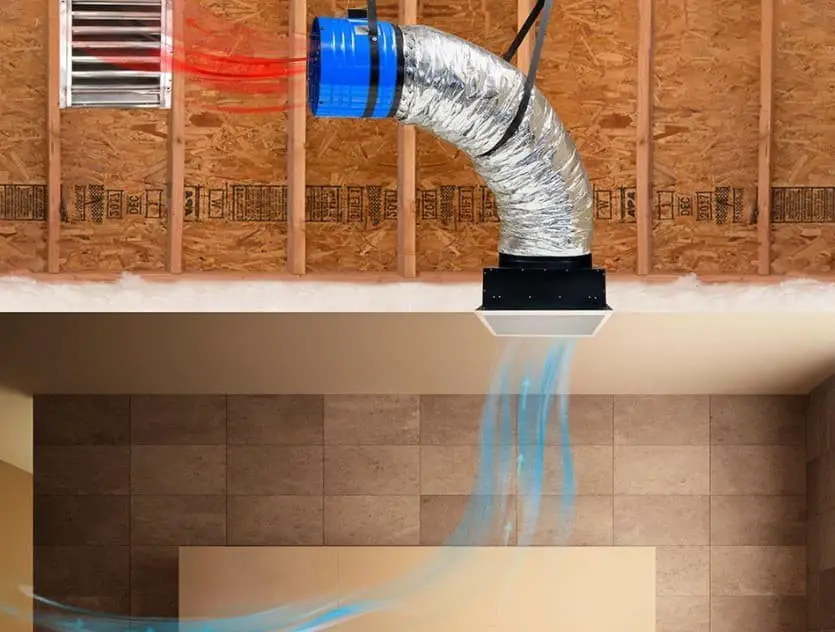
When it comes to keeping your home cool, one often overlooked option is the whole house fan. This innovative device can be seamlessly integrated into your ceiling, effectively circulating air throughout your living space by drawing in warm air from outside through your open windows, and then efficiently exhausting hot air out through your roof vent. This clever mechanism allows for a natural cooling process, eliminating the need for air conditioning units or other costly solutions.
Pros of using whole house fans:
Cons of using whole house fans:
While this method does offer some benefits for cooling down a space during hot weather, it’s crucial to acknowledge its limitations. For instance, whole-house fans can only be used when the temperature is consistently high, making them ineffective on cooler days. Additionally, the process of opening windows and doors in your home can inadvertently invite insects or other unwanted pests into your living space.
Window Air Conditioners
For a more targeted cooling solution, consider investing in a window air conditioner. These units are ideal for cooling single rooms or small areas, making them a practical choice if you only need to cool one or two spaces within your home. They can be easily plugged into an outlet or installed through a standard window opening, offering a flexible installation option. Plus, they come in a range of sizes, allowing you to select the perfect unit for your specific cooling needs.
Pros of using window air conditioners:
The installation process is remarkably straightforward, as these units can be seamlessly integrated into any room that features a window with an opening size of at least 12-24 inches. This flexibility makes it easy to find the perfect spot for your new fixture.
Cons of using window air conditioners:
While traditional air conditioning systems can cool an entire home to a comfortable temperature, mini-split systems have a unique advantage. They’re designed to target specific areas of your home, cooling only the rooms where they’re installed, rather than the entire house. This makes them ideal for homes with varying climate needs or layouts.
Conclusion
Improve your home’s comfort level with a whole-house fan, a cost-effective and efficient solution. This innovative device leverages your existing heating or air conditioning system as its power source, providing comprehensive cooling throughout your residence without breaking the bank. While air conditioners are increasingly popular, there are still affordable alternatives to keep you cool.
For more information on these alternatives, check out our blog post that explores ‘Alternatives To Central Air Conditioning’.
Related Posts
If you’re experiencing issues with your Amana dryer not heating, it can be frustrating and inconvenient. Before calling in a professional, there are several quick troubleshooting steps you can try to identify the problem. Here are six reasons why your Amana dryer may not be heating: [insert reasons]. Additionally, knowing how to make your kitchen appliances last longer can save you time and money in the long run.
For instance, understanding the types of cool mist humidifiers available and their benefits can help improve indoor air quality. Similarly, adopting smart home innovations or making the most of double ovens can simplify daily routines. Furthermore, choosing the right freezer size for your needs is crucial to maintaining optimal performance.



